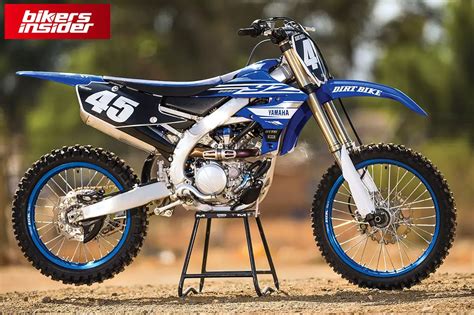Discover Your Trail Companion: Unveiling the Top Dirt Bikes for Thrilling Adventures

Embark on an Off-Road Adventure: A Comprehensive Guide to Selecting the Best Dirt Bikes for Trail Riding
In the realm of outdoor adventure, dirt biking stands as a captivating pursuit, offering riders a thrilling blend of freedom, challenge, and connection with nature. Whether you're a seasoned enthusiast or a novice yearning to explore the unbeaten paths, selecting the right dirt bike is paramount to ensuring a gratifying and safe riding experience. This comprehensive guide delves into the key considerations and factors to ponder when choosing the best dirt bike for trail riding, empowering you to make an informed decision that complements your riding style, skill level, and desired terrain.
1. Engine Displacement: Striking the Right Balance
Engine displacement, measured in cubic centimeters (cc), serves as a crucial determinant of a dirt bike's power and torque output. For trail riding, a displacement range of 125cc to 500cc is generally recommended. Smaller displacement bikes, typically ranging from 125cc to 250cc, excel in maneuverability and agility, making them ideal for navigating tight trails and technical terrain. Conversely, larger displacement bikes, typically ranging from 300cc to 500cc, offer increased power and torque, enabling riders to tackle steeper hills and rougher terrain with greater ease.
2. Two-Stroke vs. Four-Stroke: Understanding the Engine Design
Dirt bikes employ either a two-stroke or a four-stroke engine design, each possessing distinct characteristics that cater to different riding preferences. Two-stroke engines are renowned for their simplicity, lightweight construction, and explosive power delivery. However, they require more frequent maintenance and produce more emissions compared to four-stroke engines. On the other hand, four-stroke engines are known for their smoother power delivery, better fuel efficiency, and quieter operation. They also require less frequent maintenance and produce fewer emissions.
3. Frame Type: Choosing Between Steel, Aluminum, and Composite
The frame, the backbone of a dirt bike, plays a pivotal role in determining its overall handling, stability, and durability. Steel frames, while heavier than their aluminum counterparts, offer exceptional strength and durability, making them a popular choice among riders who tackle challenging terrain. Aluminum frames, on the other hand, provide a lighter and more agile ride, enhancing maneuverability and reducing fatigue during extended rides. Composite frames, though less common, offer a unique blend of strength, lightness, and vibration damping properties.
4. Suspension: Ensuring a Smooth and Controlled Ride
Suspension, comprising the front forks and rear shock, is crucial for absorbing bumps and maintaining traction, thereby enhancing rider comfort and control. For trail riding, a bike with long-travel suspension, typically ranging from 10 to 12 inches, is recommended. This allows the bike to absorb larger impacts and navigate rough terrain with greater stability. Adjustable suspension settings enable riders to fine-tune the bike's handling characteristics to suit their riding style and terrain conditions.
5. Tires: Selecting the Right Tread Pattern
Dirt bike tires come in a wide variety of tread patterns, each designed to excel in specific terrain conditions. For trail riding, an intermediate tread pattern, featuring a combination of widely spaced knobs and smaller lugs, is often the most versatile choice. These tires provide good traction on a variety of surfaces, including hard-packed dirt, loose soil, and occasional mud. For riders who frequently encounter more challenging terrain, such as rocky trails or deep mud, specialized tires with more aggressive tread patterns are available.
6. Seat Height and Ergonomics: Ensuring Rider Comfort
Seat height and overall ergonomics play a significant role in rider comfort and control. Choose a bike with a seat height that allows you to sit comfortably with both feet flat on the ground. Proper ergonomics ensure that the handlebars, footpegs, and controls are positioned in a way that promotes a natural and relaxed riding posture. This is particularly important for longer rides or challenging terrain, where fatigue can set in more quickly.
7. Additional Considerations: Enhancing Your Riding Experience
Beyond the core factors discussed above, several additional considerations can further enhance your trail riding experience. Electric start, while not essential, can add convenience and ease of use, especially for novice riders or those who frequently ride in challenging conditions. Handguards protect your hands from branches and debris, while skid plates safeguard the bike's engine and frame from rocks and obstacles. A larger fuel tank provides extended range, reducing the need for frequent refueling stops.
8. Safety First: Protective Gear and Maintenance
Safety should always be a top priority when dirt biking. Invest in high-quality protective gear, including a helmet, goggles, boots, gloves, and body armor, to minimize the risk of injury in the event of a fall. Regular maintenance is also crucial to ensure the bike's performance and reliability. Follow the manufacturer's recommended maintenance schedule and inspect the bike thoroughly before each ride.
9. Seek Expert Advice and Test Ride Before You Buy
When selecting a dirt bike, it's always advisable to seek expert advice from experienced riders or knowledgeable dealers. They can provide valuable insights and recommendations based on your riding style, skill level, and intended terrain. Additionally, taking a test ride before making a purchase is highly recommended. This allows you to experience the bike firsthand and assess its suitability for your needs and preferences.
10. Enjoy the Journey, Ride Responsibly
Dirt biking offers an exhilarating and rewarding experience, allowing you to explore the great outdoors and challenge yourself in a controlled environment. Remember to ride responsibly, respecting the environment and other trail users. By following these guidelines and choosing the right dirt bike, you can embark on countless thrilling adventures, creating lasting memories and fostering a lifelong passion for this captivating sport.